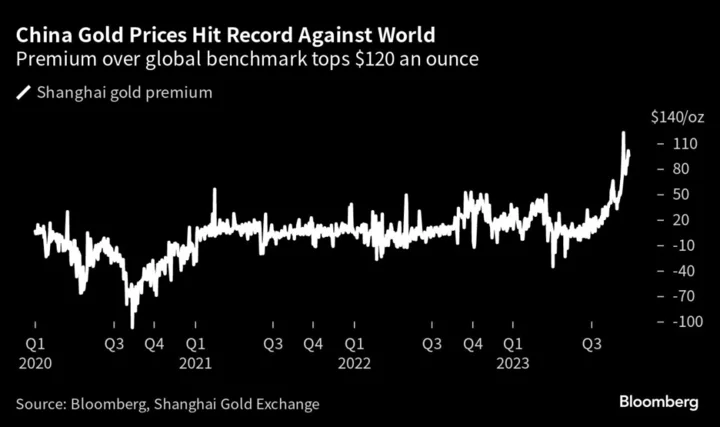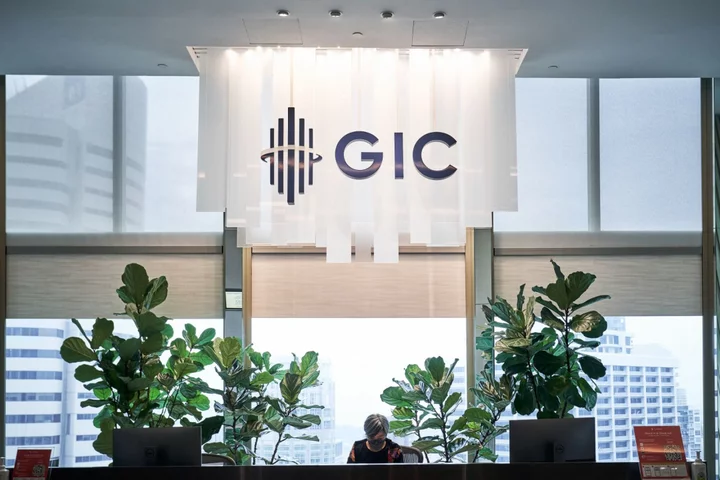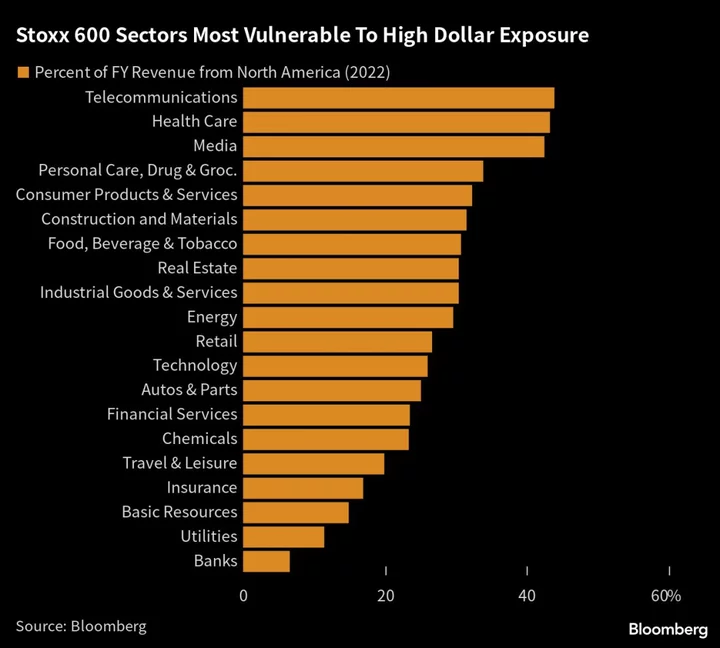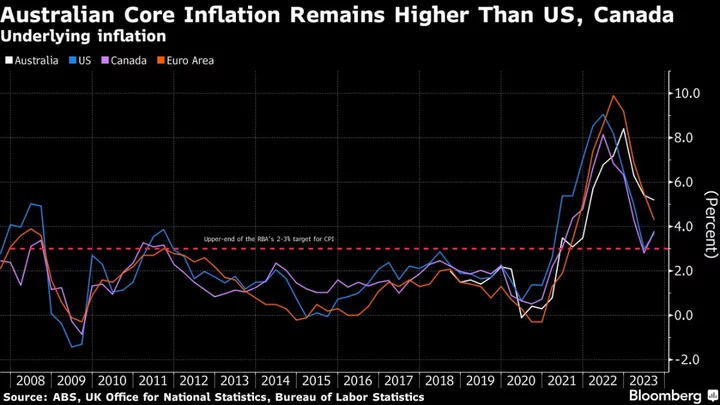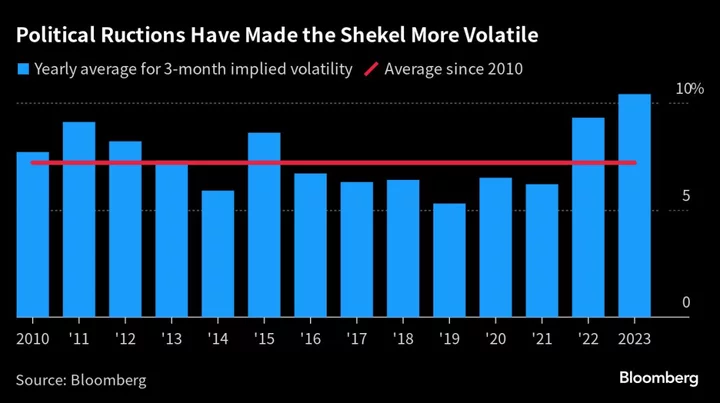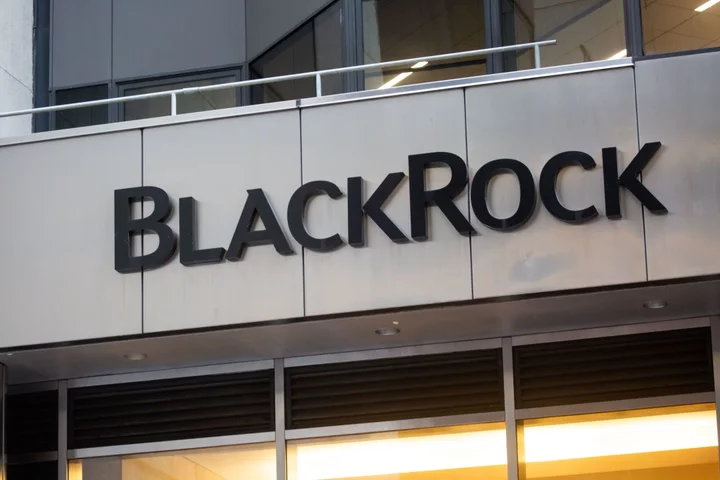China’s suddenly full of gold bugs.
The market for bullion in China has surged this month, at times commanding a record premium over international prices of more than $100 an ounce, compared with an average over the past decade of less than $6. On Wednesday, an ounce of gold in Shanghai cost $2,007, about 6% higher than the price in London or New York, according to calculations by Bloomberg.
It’s a flight to safety familiar to students of economic stress.
“With the yuan falling, the property market slumping and capital controls keeping money from leaving the country, investors are buying gold,” Bloomberg economists David Qu and Chang Shu wrote in a report.
It also marks a sharp reversal from earlier in the year, when China’s slowdown curbed interest in the metal as consumers responded to uncertain economic conditions by conserving cash.
The so-called Shanghai premium started rising in June, a response in part to import curbs imposed by the People’s Bank of China, which may have been trying to shore up the value of the yuan by shrinking the need for dollars to buy gold. But now, the currency’s plunge is having the opposite effect, as investors chase dollar-denominated assets to preserve value.
Although import restrictions have been loosened, bullion should remain supported by firm demand, Standard Chartered Plc’ analyst Suki Cooper said in a note last week.
Factor in China’s protracted property crisis, loose monetary policy and tumbling bond yields, and it’s no mystery why demand for a haven like gold would soar.
Withdrawals from the Shanghai Gold Exchange in August jumped 40% from the previous month, while imports climbed 15%. Meanwhile, inflows into Chinese exchange-traded funds rose to their highest since July 2022. Gold is also finding support from China’s central bank, which has boosted purchases for 10 straight months as it diversifies its reserves.
Still, it isn’t clear whether gold’s lofty pricing can support these levels of consumption. The market will be focused on the Golden Week holiday in early October, which usually brings a splurge in purchases of the precious metal in China.
The international price for spot gold was steady Wednesday near $1,900 an ounce after falling more than 1% since last week.
The Week’s Diary
(All times Beijing unless noted.)
Wednesday, Sept. 27
- China industrial profits for August, 09:30
- CCTD’s weekly online briefing on Chinese coal, 15:00
- China Intl Aluminum Week in Yinchuan, Ningxia, day 2
Thursday, Sept. 28
- China weekly iron ore port stockpiles
- Shanghai exchange weekly commodities inventory, ~15:30
- China Intl Aluminum Week in Yinchuan, Ningxia, day 3
Friday, Sept. 29
- China holiday
Saturday, Sept. 30
- China’s official PMIs for September, 09:30
Sunday, Oct. 1
- Caixin’s China PMIs for September, 09:45
On the Wire
China’s economy has experienced a bit of relief since the end of August, supported by firming production and stronger car sales. September PMIs are likely to show recent stimulus measures starting to have an impact.
China’s dominance of the transition to electric vehicles is the latest source of tension with the US and Europe, where policymakers face a costly catchup effort to avoid long-term dependency.
Global steelmakers will finally start to see some reprieve from the flood of Chinese exports that have been inundating the market.

